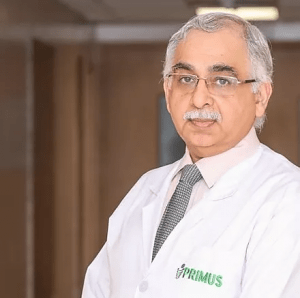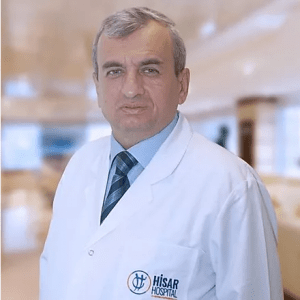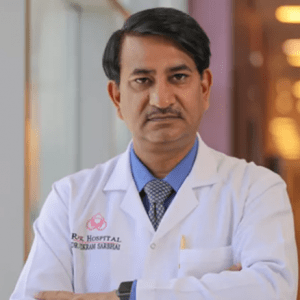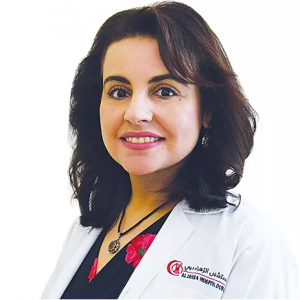Severe acute respiratory syndrome is an infectious respiratory disease caused by severe acute respiratory syndrome coronavirus (SARS-CoV-1), which is a member of a large family of viruses called coronaviruses.
This virus can be spread from one person to another through the droplets released by an infected person; this could be through sneezing, coughing, or talking. It can also be transmitted with hands through touching surfaces contaminated with the virus.
The first known case of SARS human infection was recorded in November 2002.
SARS-CoV causes a damaging effect to the body by attaching to lung tissues and reproducing itself and killing cells in the process of spreading. These dead cells drop off the lungs’ linings and form clumps inside the organ, creating difficulty for the infected person to breathe, and triggering further infections. The virus can also overlabour the immune system in its drive to fight off infection, thus, causing further respiratory difficulties and infection.
Where infection becomes severe, the damaging effect may extend to other organs, leading to dysfunctional stomach, intestines, heart, liver, and kidneys, and even provoking organ failure.
TYPES
The coronaviruses are a family of viruses responsible for diseases such as severe acute respiratory syndrome coronavirus 2 (SARS-CoV-2) and the Middle East respiratory syndrome (MERS).
SARSr-CoV is a subgroup of coronaviruses called severe acute respiratory syndrome-related coronavirus. SARS-CoV-1 has been succeeded by a stronger strain of the virus, SARS-CoV-2, which began in December 2019 and has caused millions of deaths.
MODE OF TRANSMISSION
SARS-CoV, the virus that causes SARS often spreads where people are not distancing apart- usually when they closer than 6 feet, or 2 arm lengths away from one another.
The virus is usually spread through aerosols released during the coughing, sneezing, talking, or breathing of an infected person. The infected aerosols can be inhaled into the nose mouth and cause the new carrier to be infected with the virus.
In the same vein, droplets that may have landed on surfaces and objects can be transferred by touch, resulting in the tendency for others to touch those surfaces and bring the aerosols into their mouth, nose, or eyes with their own hands. When these infected fluids get into the body through these apertures, the virus enters the body and begins to attack the body system.
SARS usually takes 6-10 days from the day a person contacts it to the time the symptoms begin to manifest. This period is called the incubation period, and in some cases, could last as long as 14 days.
COMPLICATIONS THAT MAY ARISE FROM THE CONDITION
SARS can lead to severe breathing difficulties that require respirators for survival. In extreme cases, it can lead to respiratory, lung, heart, and liver failures.
The occurrence of acute respiratory distress syndrome (ARDS) can cause death in few weeks.
SARS is even more fatal in elder people, above the age of 60 and people who already have underlying health problems such as hepatitis, high blood pressure, diabetes, etc. Even more worse for people with respiratory problems such as asthma, pneumonia, heart problems, etc. With such conditions, there is a high tendency for death.
DIAGNOSIS
During diagnosis, the doctor will inquire if you have been in an environment where there is a case of SARS and ask about the symptoms you are experiencing.
In cognizance with World Health Organization (WHO), SARS is diagnosed if you have all of the following symptoms:
- High fever of 38°C and above
- Respiratory issues are characterized by difficulty in breathing, short breath, cough.
- Radiology suggesting the presence of pneumonia.
- No other diagnosis that can explain the sickness.
Your doctor will suggest the following tests to aid diagnosis.
- Blood tests
- Imaging tests such as MRI and CT scans to check for pneumonia.
- Nasal secretion tests.
- Stool tests.
TREATMENT
Severe acute respiratory syndrome coronavirus can be managed through SARS infection prevention and control measures, and supportive care.
The latter requires supplying the patient with supplemental oxygen and mechanical ventilatory support when indicated.
Remdesivir (Veklury), an FDA approved drug, is used for the treatment of coronavirus in some situations.
However, there is no specific medication out for the cure of the disease yet. Many medications are on clinical trials but none has been established as a cure.
RECOVERY RATE
Several cases have been said to be recovered after weeks to months of management.
Once you are diagnosed with SARS, you will be placed in isolation away from others to avoid transmitting the virus. During your period of isolation, you will be given medications to relieve your symptoms. Humidifiers will be placed to help sterilize the air and if you experience serious breathing difficulties, you will be placed on ventilators.
According to how resistive and strong your immune system and body condition are, you can take few weeks to several months to recover.
PREVENTION
Severe acute respiratory syndrome coronavirus can get into the body when infected aerosols from the carrier get into the eyes, nose, or mouth of another person.
The following can greatly help in the reducing transmission rate.
- Wearing a mask in public spaces or places with a high probability of being infected. By wearing a mask, people can also prevent the spread of the virus from themselves to others, if they have it.
- Staying at least 6 feet away from others. Staying at distance (about 2 arm lengths) from others can reduce the chances of spreading the virus since body fluid droplets that may be infected with SARS-CoV-2 do not travel very far when expelled.
- Avoiding surfaces, as much as possible, since very infected body aerosols may rest on surfaces.
- Washing hands or using hand sanitizer regularly, since people often touch their face with their hands, the hand remains the greatest tool for magnetizing and transmit the virus. Washing hands with soap and water will keep the virus away and make them safe for use.
PROGNOSIS
SARS began in China in November 2002 and before it was contained in 2003, it had killed 774 people. After that, there has been no other case of SARS recorded again until the inception of a stronger coronavirus strain called COVID-19 in December 2019 which killed thousands of people in a short period.
Symptoms
SYMPTOMS
Symptoms of SARS often occur 5-14 days after exposure to the virus. Infected persons may have varying symptoms, often comprising of a few or more of the following:
- Cough
- Difficulty in breathing
- High body temperature
- Headache
- Fatigue
- Loss of taste or smell
- Body aches
- Sore throat
- Congestion or runny nose
- Nausea or vomiting
- Diarrhea
FAQ
Can people with mild SARS symptoms recover at home?
Those having SARS symptoms which are not threatening can manage and recover from the disease at home. However, they should isolate themselves from the rest of their household, make sure they and their family are taking preventive measures, and visit the hospital, should their case worsen.
If I tested negative to SARS, does that show I cannot have it?
If your test result revealed that you did not have the virus, it does not mean that you cannot be infected with it. It only means that at the time your sample was taken for the test, you were not infected with the virus. Therefore you must continue to take SARS precautionary measures to protect yourself and those around you.
Is it possible for someone to be infected and not know?
Yes, it is possible. First, the person might be in the incubation days of his infection- when the symptoms are yet to show up. Another reason might be that the person is an asymptomatic carrier of the virus (i.e. an infected person who doesn’t show any symptom of the disease but can spread it to others). Everyone needs to adhere to SARS precautionary measures, whether they feel the symptoms or not.
I was sick of SARS but recovered from it. Does that mean I will never be sick of it again?
While people can develop antibodies to prevent a recurrence, people can fall ill of the disease again. Therefore, it is best to stay safe.
How do I get tested for SARS?
If you are feeling severe SARS symptoms, visit a health center and lodge your complaint. A doctor will diagnose you and know what steps to take, otherwise call the Centre for Disease Control in your country or province and they would know how to manage your case. Either way, you may be required to undergo a test to reveal if you have been infected with the virus.























































